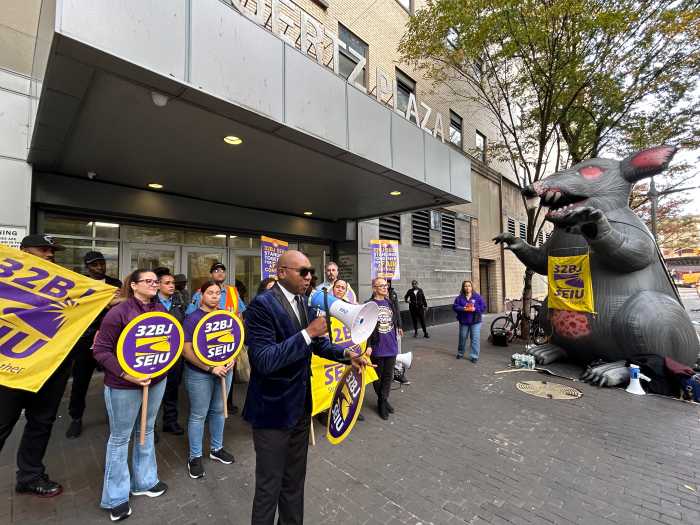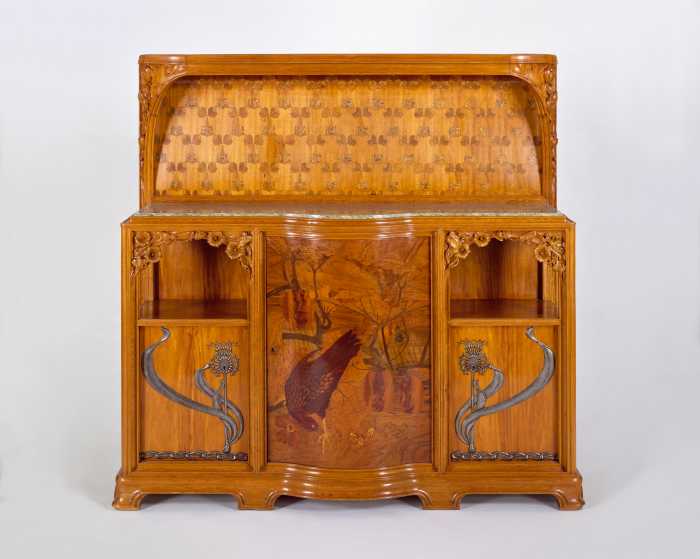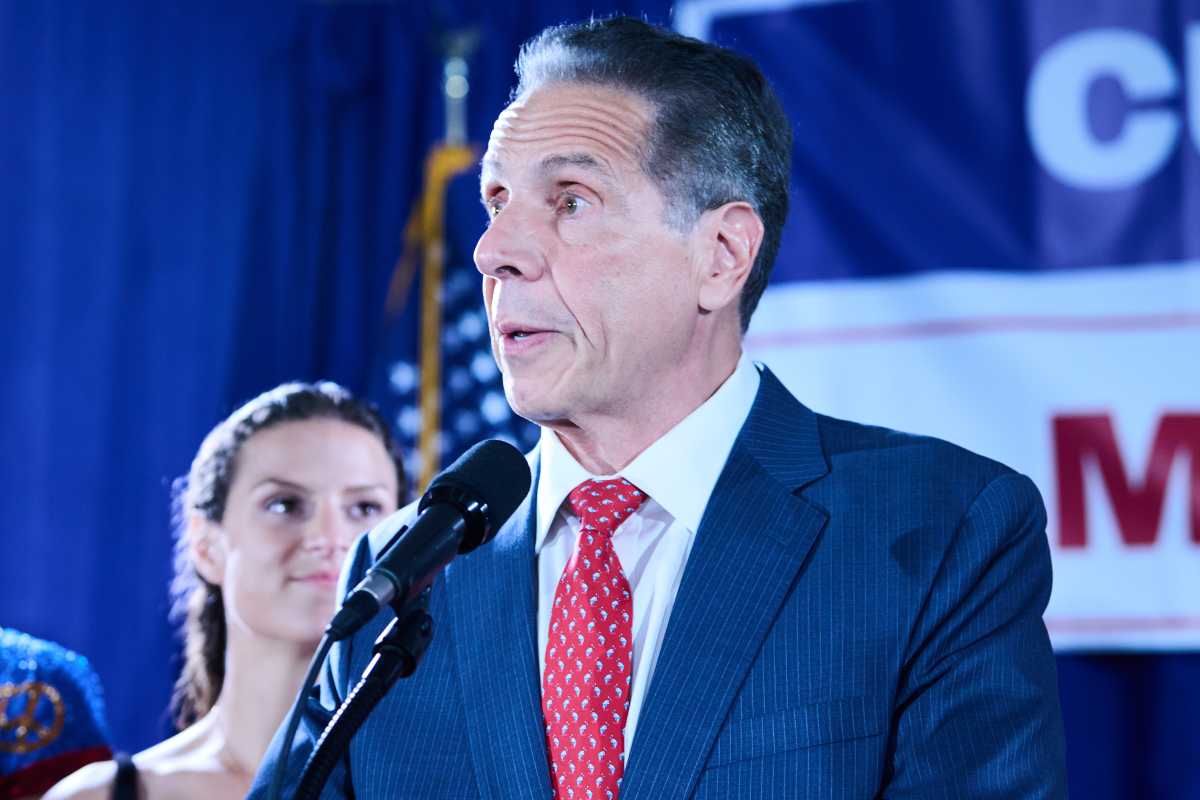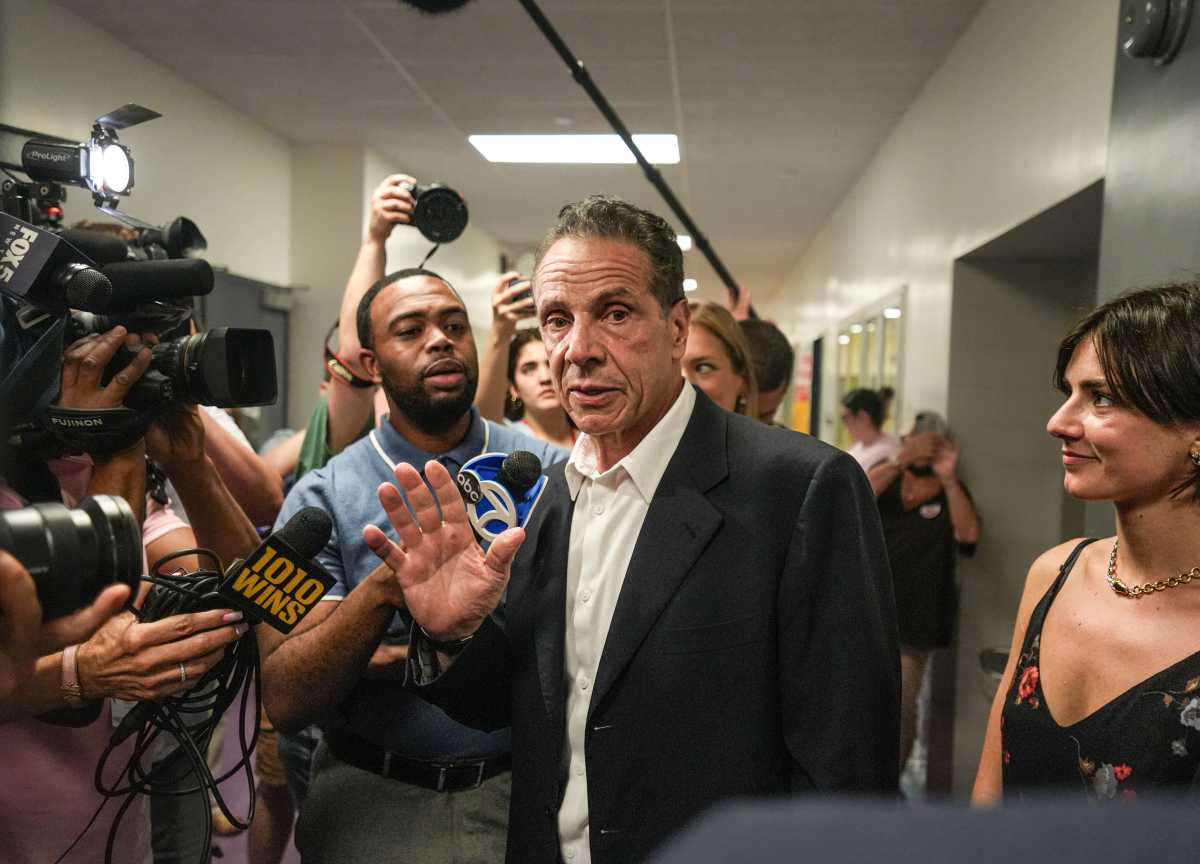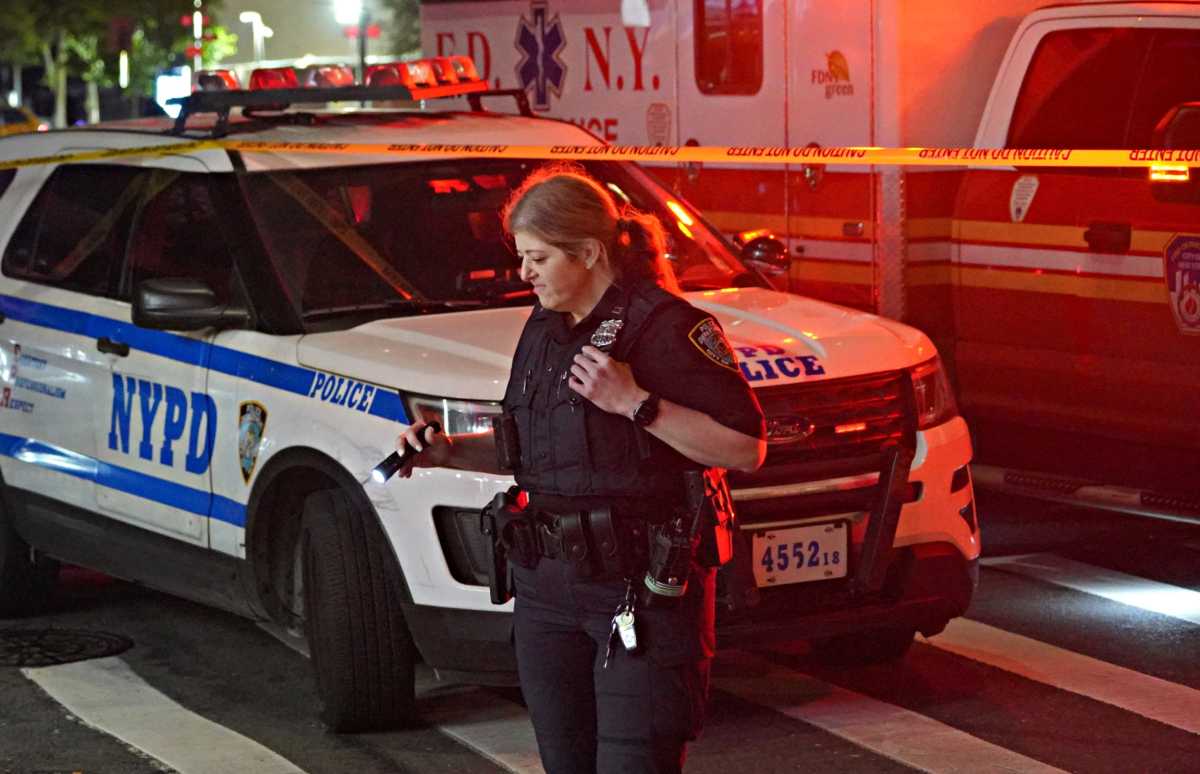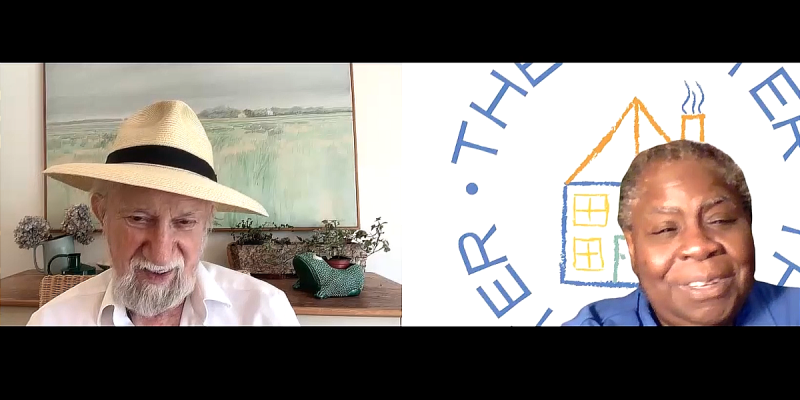Mayor Eric Adams signed a package of bills Thursday aimed at tackling New York City’s long-standing “scaffolding shed epidemic.”
The five pieces of legislation, approved by the City Council in late March, are designed to reduce the number of temporary steel-and-wood sidewalk sheds that have become a familiar—and often unsightly—presence across the five boroughs. While originally intended to protect pedestrians from falling debris, many sheds remain in place for years, blocking light, obscuring architecture, and cluttering city streets.
Adams, who partnered with the Council on the “Get Sheds Down” initiative launched in July 2023, praised the new laws as a turning point.
“The days of allowing scaffolding to languish on our streets are over,” the mayor said. “These reforms will let the light back onto our sidewalks.”
The five bills aim to address several long-standing complaints over sidewalk sheds, including the length of time that sheds can be erected for and the aesthetic appearance of the sheds.
The package also attempts to reverse several requirements introduced by the decades-old Local Law 11, which requires landlords to inspect their building facades every five years and erect sidewalk sheds during each inspection.
“These revitalized rules will help the city remove unsightly scaffolding as well as make sure that sidewalk sheds are more visually appealing when they go up for a limited amount of time. Above all, they will allow us to reclaim valuable space for the public,” said Adams.
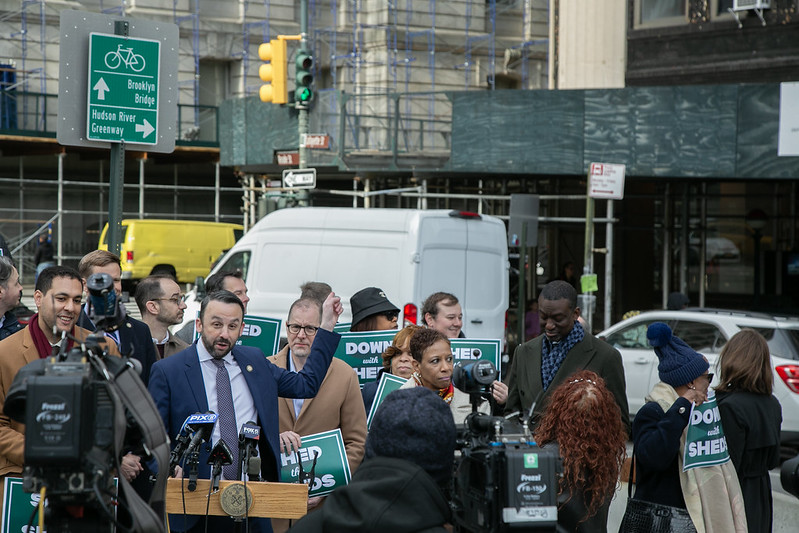
Intro 393A, for example, will reduce the permit length for new sidewalk sheds connected to facade inspection from one year to three months.
The bill, introduced by Manhattan Council Member Keith Powers, has also introduced new penalties for building owners who do not conduct repairs in a timely manner, starting at $10 per linear foot per month and rising to a maximum of $6,000 per month.
Landlords can, however, renew their three-month permits if they can prove financial hardship, struggles accessing a neighboring property or other issues impacting necessary repairs at a building.
Powers introduced two other bills in the legislative package, including Intro 394A, which extends facade inspections for new buildings from five to eight years.
The bill also eliminates the city’s existing five-year Façade Inspection and Safety Program (FISP) cycle and requires the Department of Buildings to establish a longer interval between inspections. The DOB will make an official determination on the new cycle length during the summer, with the updated window set between six and 12 years.
Intro 391A – the third and final bill introduced by Powers as part of the legislative package – requires the DOB to recommend new sidewalk shed designs to the City Council by September 2025 in a bid to improve the appearance of the sheds across the city.
The bill also requires the DOB to promote the use of containment netting as an alternative to sidewalk sheds and additionally expands the allowable color palette of sidewalk sheds beyond hunter green, to include metallic gray, white or a color matching the façade, trim, cornice or roof of the building.
Architecture firms PAU and Arup US are already designing potential alternatives to the current sidewalk sheds in use across the city, with the firms’ reports due this summer. Under the new legislation, the DOB is required to share the results of that study with the City Council.
Erik Bottcher, who introduced the final two bills of the legislative package, has also attempted to clamp down on sheds that remain erected for several years through Intro 661A, which introduces penalties of between $5,000 and $20,000 for facade repairs that are not completed on time.
Landlords who have identified unsafe conditions during inspections of building facades will have five months to submit construction documents to the DOB; eight months to submit necessary permit applications; and two years to fully conduct facade repairs or they will be liable for penalties under the terms of the newly-passed legislation.
Bottcher’s Intro 660A, the fifth and final bill included in the legislative package, will double the lighting required in public walkways under sidewalk sheds in a bid to improve safety for members of the public.
Sidewalk sheds have long provoked criticism due to the length of time that they remain fixed to buildings throughout the five boroughs of New York City.

In July 2023, for example, QNS reported that scaffolding structures were consistent features at prominent courthouses throughout Queens for almost five years, including the Queens County Criminal Court at 125-01 Queens Blvd. and the Supreme Court of Queens County at 88-11 Sutphin Blvd. in Jamaica.
Crain’s New York reported that the city’s estimated 8,500 sidewalk sheds boast an average lifespan of 500 days, with advocates for the legislative package stating that the structures obscure buildings from the public and make sidewalks poorly lit for pedestrians.
The Real Estate Board of New York (REBNY), who pushed the council to adopt softer legislation to provide landlords with means to escape fines for problems they could not control, commended both the Adams Administration and the City Council for listening to concerns of the real estate industry.
Daniel Avery, director of policy at REBNY, said in a statement last month that there are still issues to “work out” in the rulemaking process but added that REBNY is confident that all bills will be fair and effective.
“We commend the bills’ sponsors, City Council and Administration, for considering the concerns from our industry on this topic and advancing legislation that will spur more user-friendly and creative sidewalk sheds,” Avery said in a statement. “There are still issues to work out in the rulemaking process, but we are confident all stakeholders can work together to make these bills fair and effective.”




